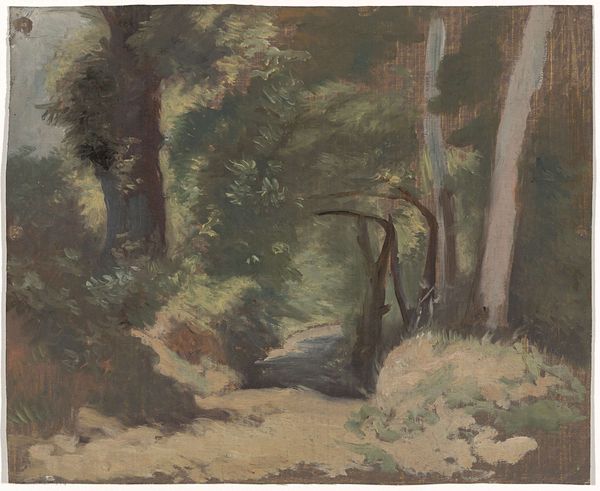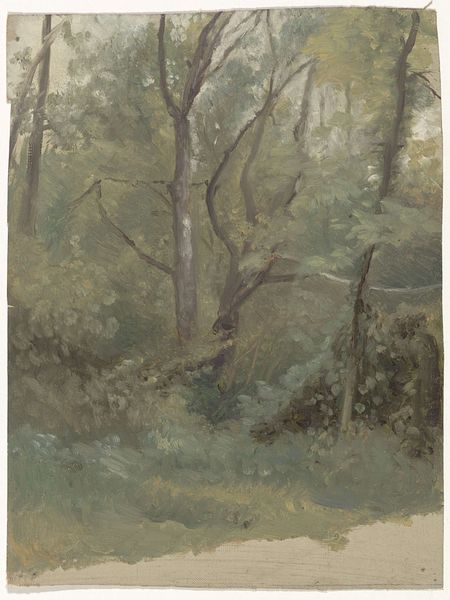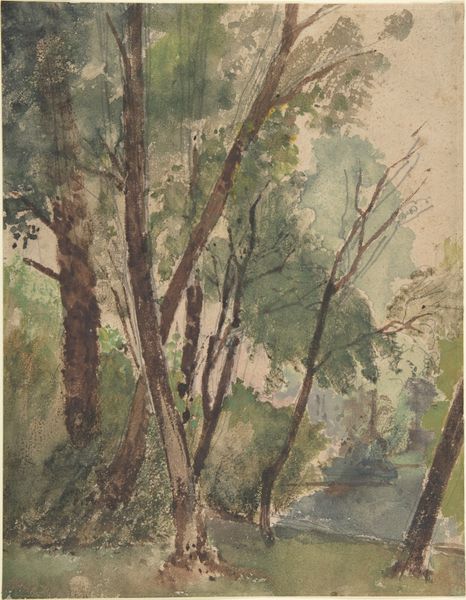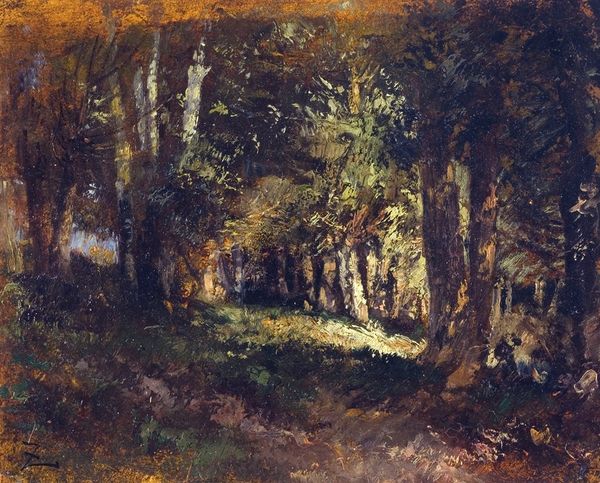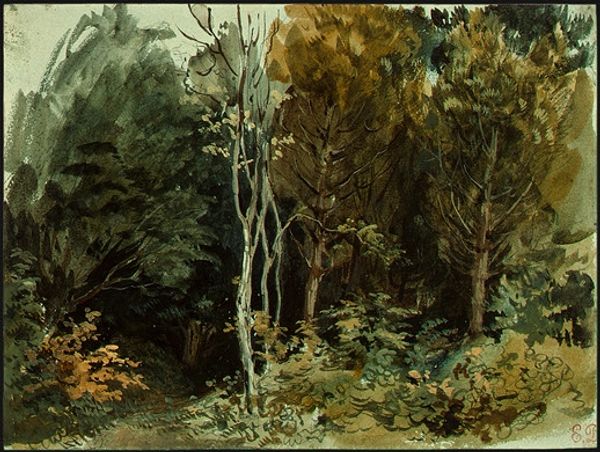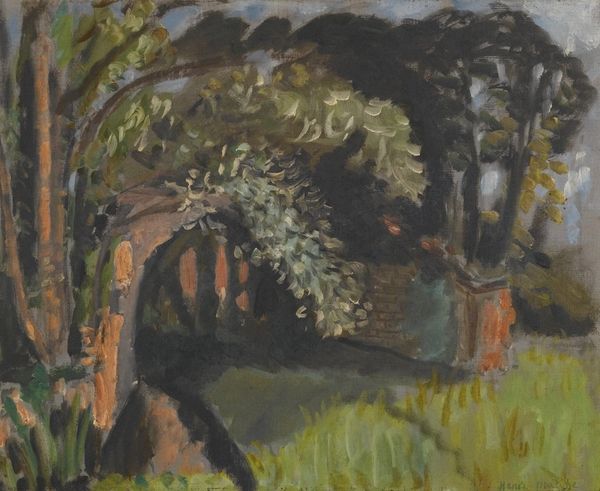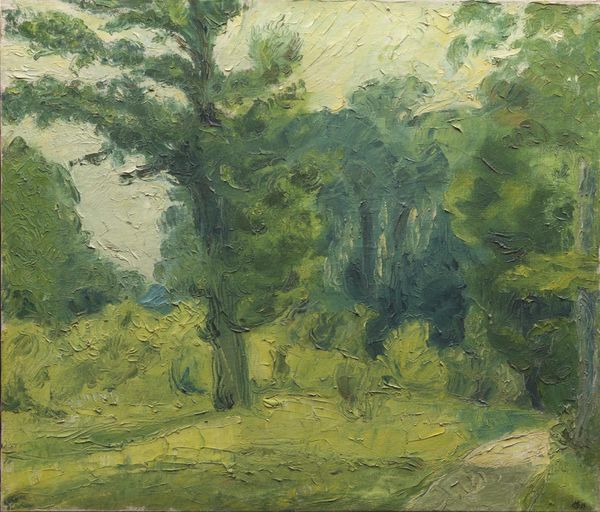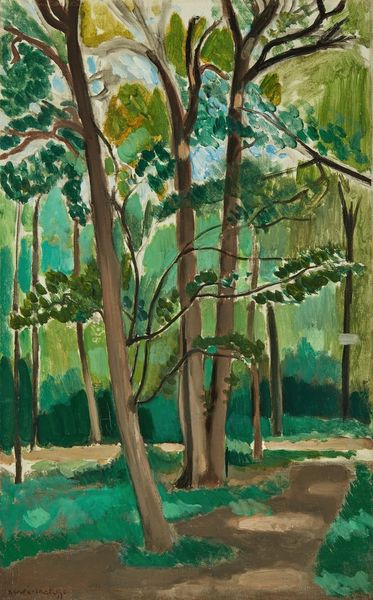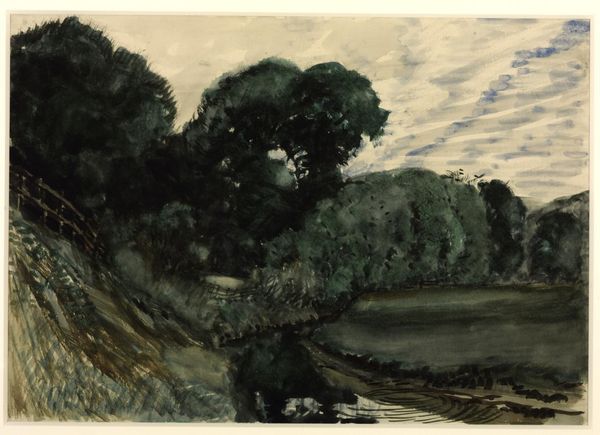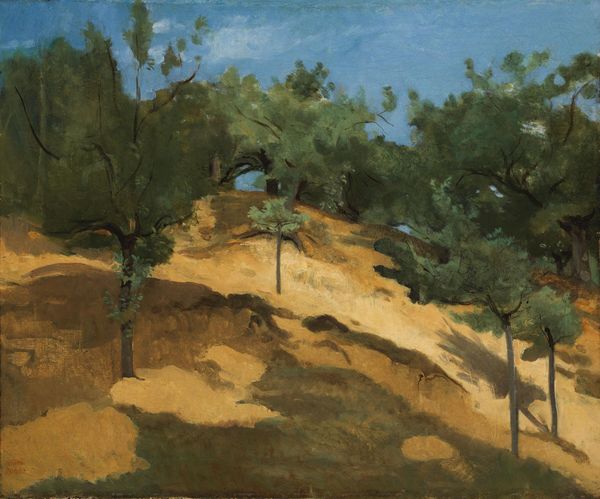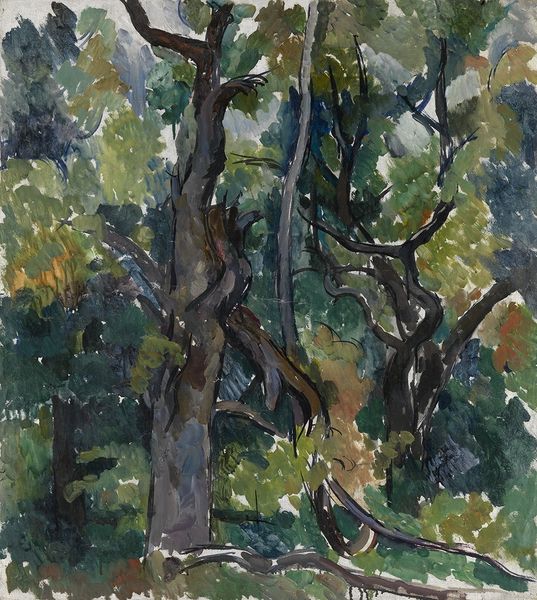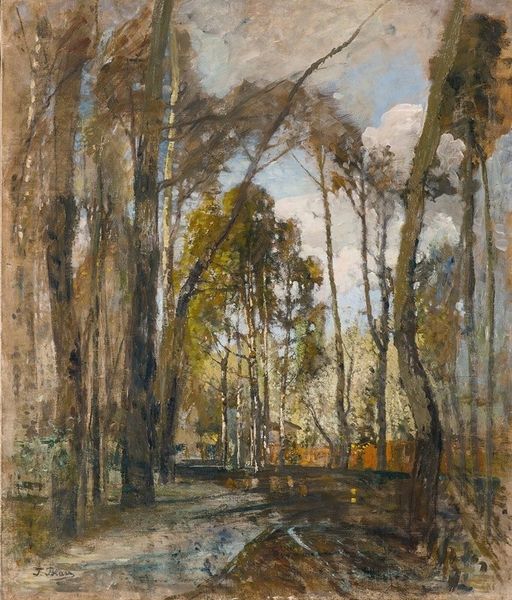
plein-air, watercolor
#
plein-air
#
landscape
#
watercolor
#
romanticism
#
northern-renaissance
#
watercolor
Copyright: Public Domain: Artvee
Curator: This watercolor by Eugène Delacroix, entitled *The Edge of a Wood at Nohant*, likely dates from around 1842-1843. My first impression is how somber yet delicate it appears. Editor: Somber is the word! There's a certain unease. Look how the watercolor bleeds and pools, especially on the left side; it evokes a sense of mystery, a kind of untouched wilderness perhaps. Curator: Exactly. Consider Delacroix's involvement with Romanticism, a movement obsessed with the sublime and the raw power of nature. It’s interesting, though, that he painted this *en plein air*, focusing his attention on a specific location to create the painting. We're far removed from his sweeping historical dramas, which were typically fabricated inside of the studio. What can be made of that? Editor: That raises an interesting question about the artist's broader role in depicting place and, subsequently, identity. Was there, for example, pressure for someone of his stature to create idyllic pastoral images that masked social unrest or the exploitative labour that was used to produce and extract the landscapes we often take for granted today? In his choice to paint a humble edge of the forest, a scene void of people, there is much left to be read into that choice. Curator: I wonder if "choice" is the operative word here. There has always been the argument that *plein air* lends a certain objectivity that mitigates that risk. It's hard to ignore what you see right in front of you! The greens are not manicured, and the trees have scraggly, crooked trunks. We cannot assume these images were wholly devoid of the socioeconomic contexts surrounding them, which shaped the very act of creation as it occurred on location in Nohant. It certainly asks questions about who this work might be speaking to and who it silences. Editor: I think so too. We can't ignore the institutional power structures inherent in how the work functions. What can it achieve for Delacroix? How does his aesthetic vision either benefit or dismantle oppressive forces at play within 19th century France? Curator: On reflection, focusing solely on artistic vision seems inadequate in grasping its complete relevance, considering its lasting presence and continued display here. Editor: Absolutely. Analyzing art through its complex relationships with history and contemporary struggles allows us to perceive and comprehend the depths and contours of images such as these.
Comments
No comments
Be the first to comment and join the conversation on the ultimate creative platform.
